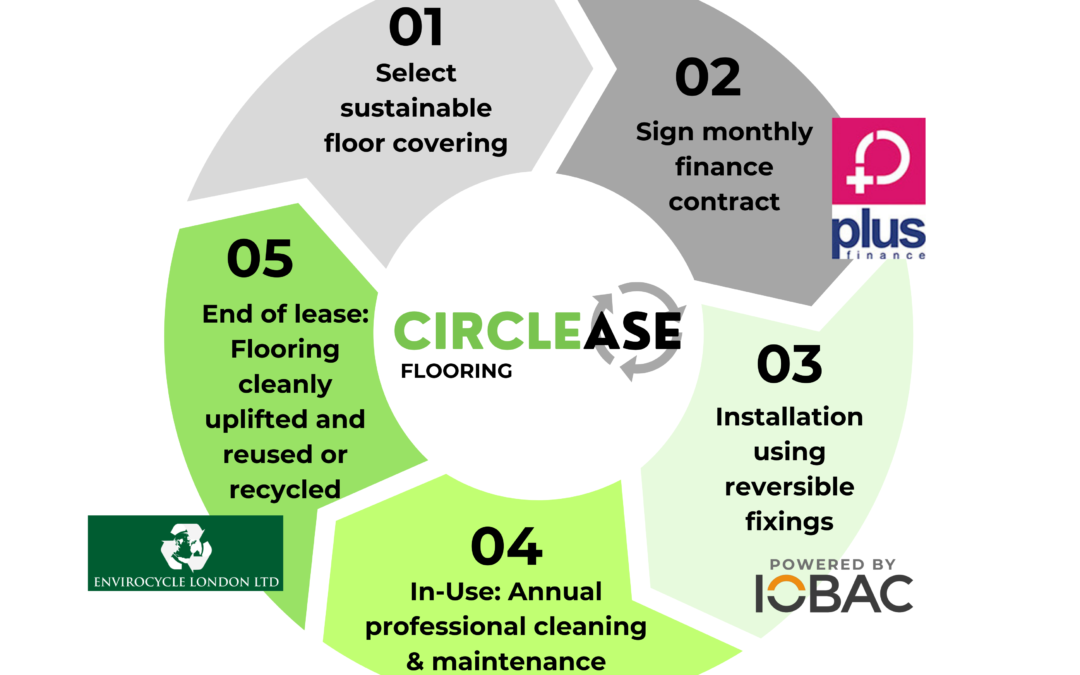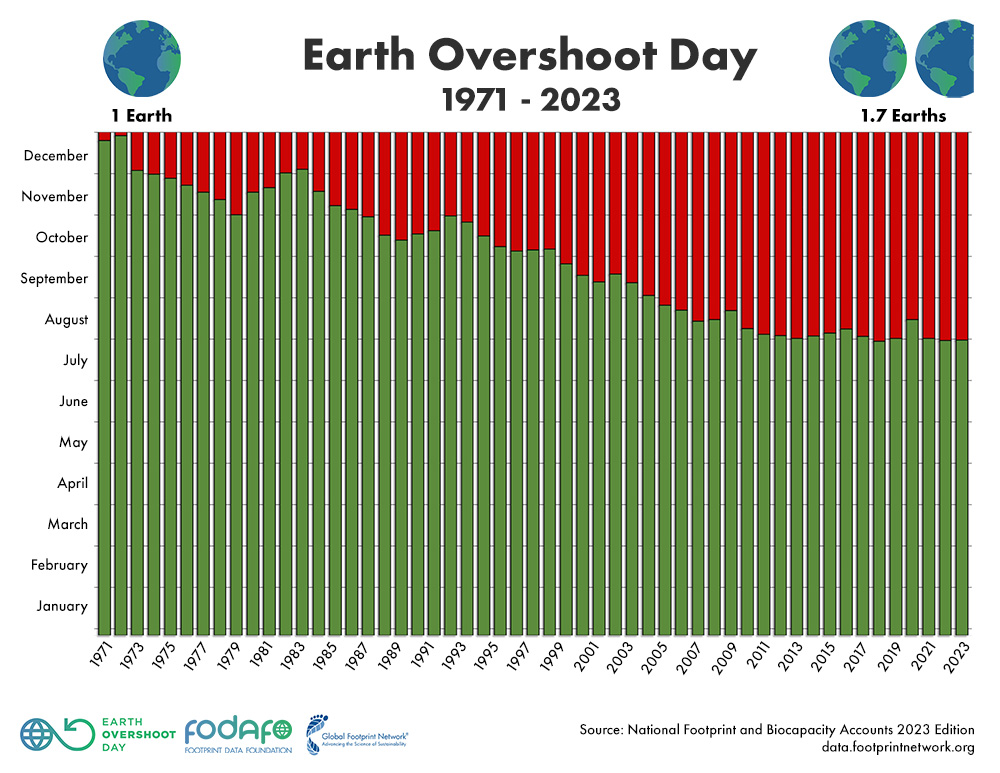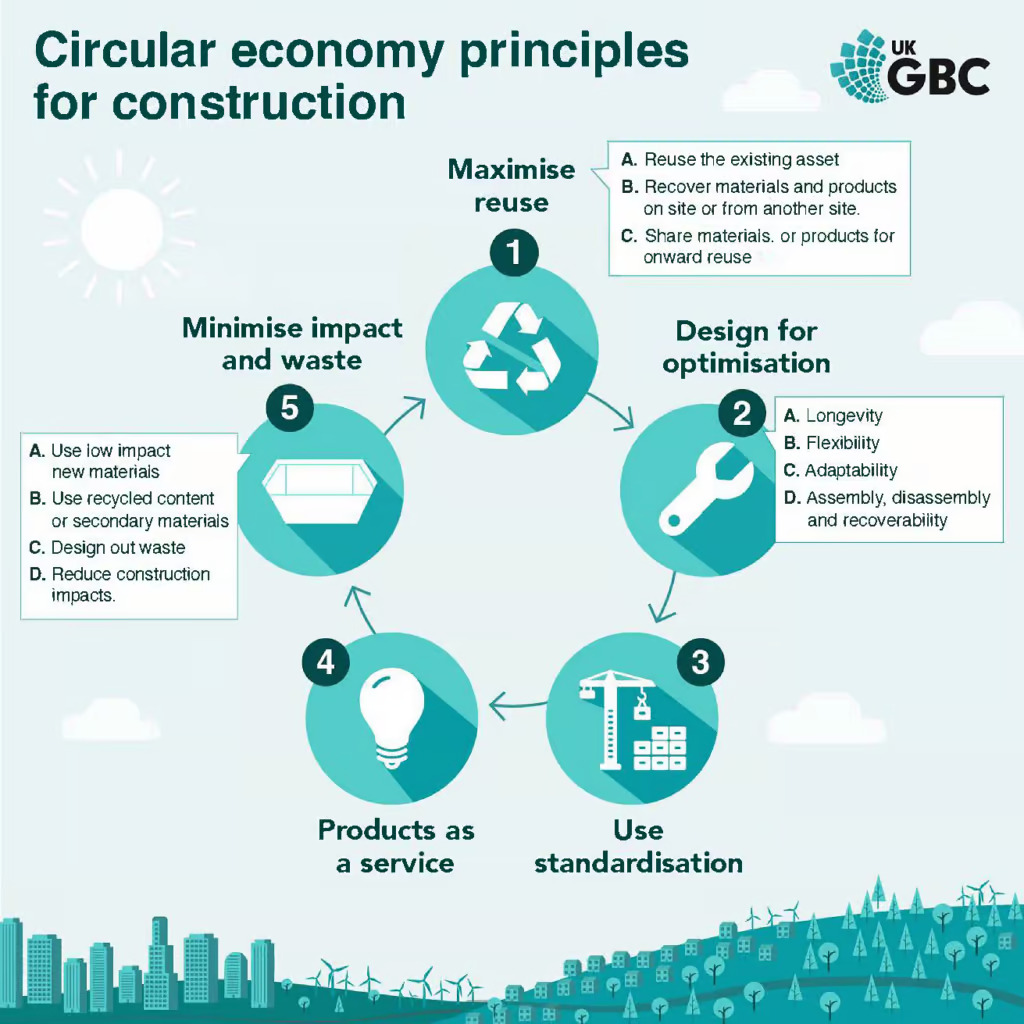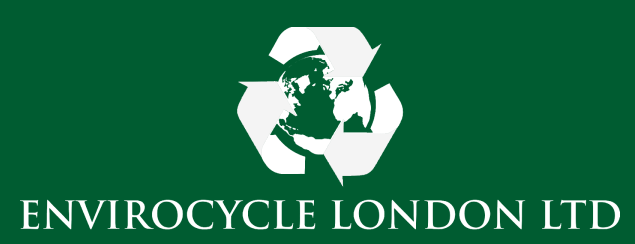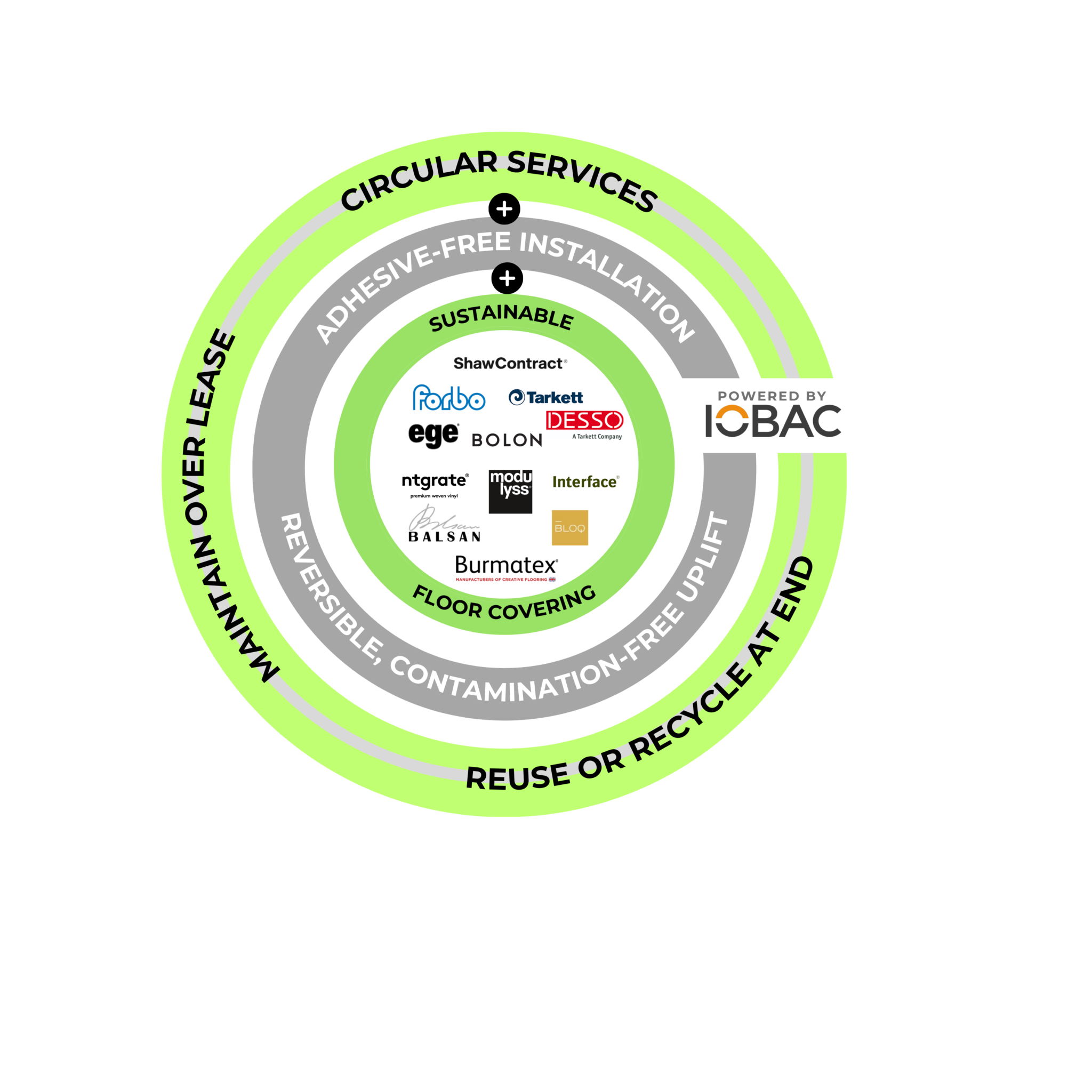> Why We Need To Move to A Circular Economy
> Circular Economy Principles For Buildings
> What Does Product-as-a-Service Mean?
> What Is Circlease Floor Leasing?
> How Is Circlease Floor Leasing Circular?
> What Are The Benefits Of Circlease Floor Leasing?
> What Are The Challenges Of Circlease Floor Leasing?
> Examples of Products-As-A-Service in the Built Environment
> Find Out More
Earth Overshoot Day marks the date in any given year when humanity’s demand for ecological resources exceeds what planet Earth can regenerate.
In 2023, Earth Overshoot Day fell on August 2nd, a date which has been moving steadily backwards over the past 50 years.
Our current linear method of “take-make-waste” is exhausting the planet’s resources.
In contrast, a circular economy aims to keep resources in use for as long as possible, gaining the maximum benefit from them while reducing negative environmental impacts.
“In a circular economy, products and materials are kept in circulation through processes like maintenance, reuse, refurbishment, remanufacture, recycling, and composting.”
Source: Ellen Macarthur Foundation
HOWEVER according to the Circularity Economy Foundation’s 2024 Gap Report, whilst the circular economy is gaining in popularity, it is falling short on action.
The volume of discussions, debates and articles on circular economy has almost tripled over the past five years.
Yet the share of cycled materials consumed by the global economy has been in steady decline over the past 5 years from 9.1% in 2018 to 7.2% in 2023.
Over the same period, the world has consumed 28% of all the materials humanity has consumed since 1900.
So how can the built environment respond to this?
How do we convert all the circular conversations into meaningful action?
The UK Green Building Council (UKGBC) has laid out 5 Circular Economy principles to demonstrate how to build in circularity at each project lifecycle stage:
- Maximise reuse (including refurbish and repurpose)
- Design buildings for optimisation
- Use standardisation
- Products as a service
- Minimise impact and waste
When it comes to flooring, we work very hard in particular on Principles 1: Maximise Reuse and 5: Minimising Waste.
Carpet Recycling UK (CRUK) recorded circa 484,000 tonnes of carpet and textile flooring waste disposed of in the UK in 2021. Whilst around 80% was diverted from landfill, only a small proportion of that was through reuse, with the vast majority going for energy from waste recovery, recycling and incineration.
IOBAC was founded on the belief that there had to be a better way to manage flooring throughout its life-cycle.
Reusing, rather than recycling, materials keeps them at their highest level of value.
But adhesive-based flooring installation can render even the most sustainable of floor finishes as single-use materials due to contamination.
IOBAC’s contamination-free installation solutions such as MagTabs and Tab-It address this issue by enabling floor coverings to be affixed securely throughout the life of the installation, yet cleanly and easily uplifted, ready to be reused elsewhere.
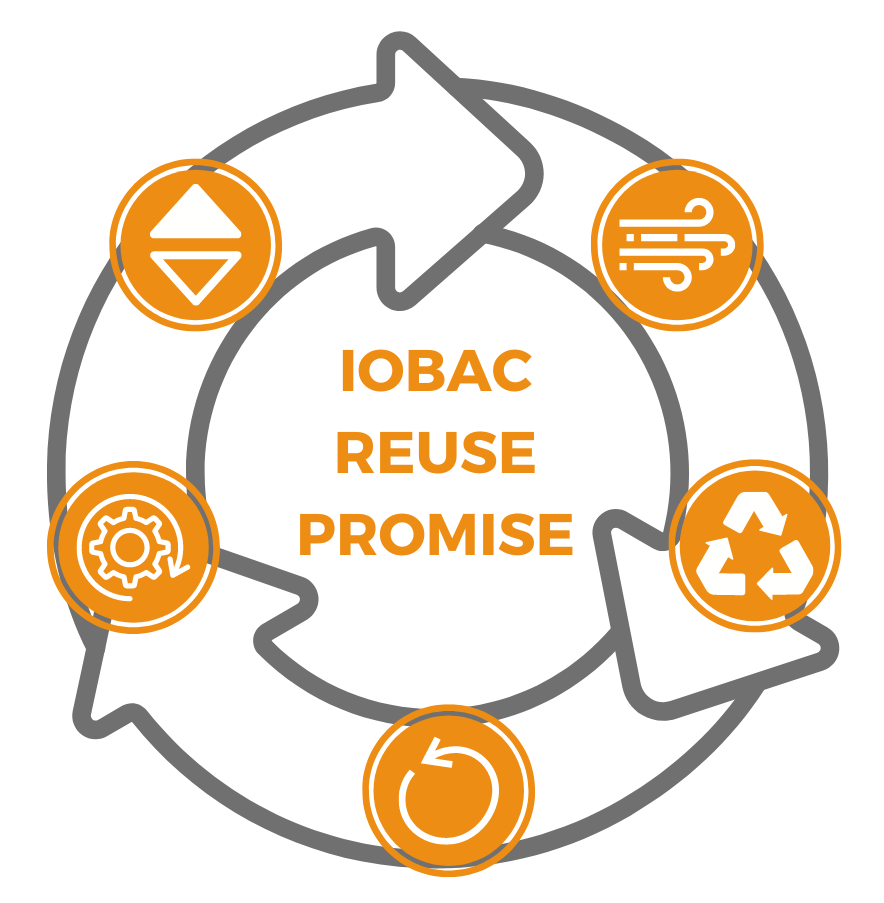
So where does Principle 4: Products-as-a-Service fit in?
The UKGBC describes products-as-a-service as “creating payment systems whereby materials are treated as a service … paying for the service of using materials not for the materials themselves.”
This business model uses the concept of “access rather than ownership”, whereby components such as lighting, office furniture and flooring are leased to an owner or operator from a manufacturer for an agreed length of time.
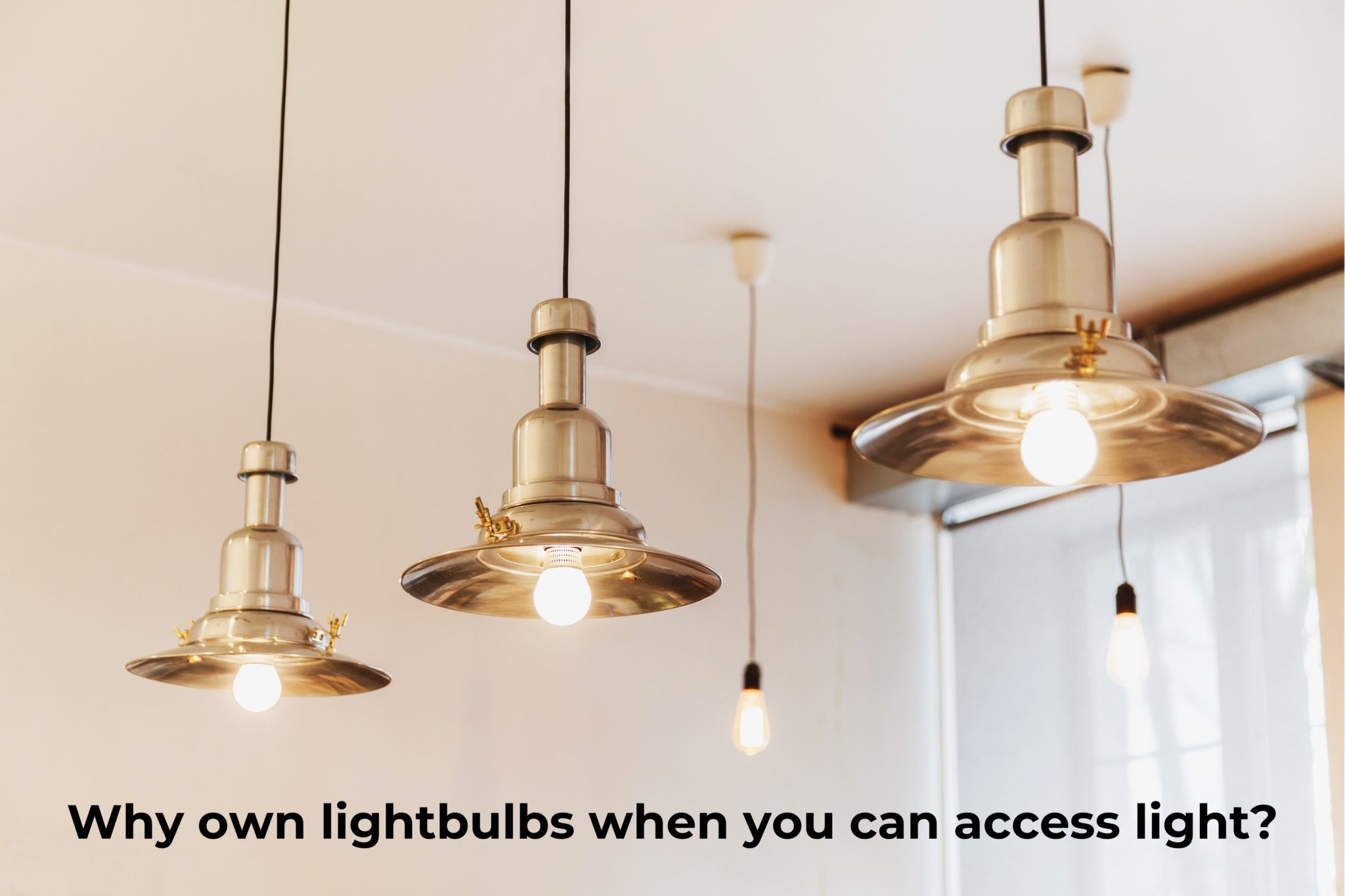
As it’s in the manufacturer’s best interests to keep their asset operating for as long as possible, they are incentivized to offer high quality, durable systems.
Lease contracts will typically include thorough care and maintenance programs to protect materials, extending useful material life, maximising usage and minimising waste.
It’s a sustainable, circular approach to flooring, whereby a client has peace of mind that the flooring they specify will be installed, maintained and uplifted with reuse and circularity in mind.
The client pays a monthly service fee underpinned and facilitated by finance fit-out experts, Plus Finance.
The flooring is professionally cleaned and maintained throughout the contract.
Then at the end of the agreed contract, the flooring is uplifted and reused or recycled via environmental waste contractor, Envirocycle London. After recovery & grading, it is then supplied to charities, schools, businesses, contractors and the public for reuse.
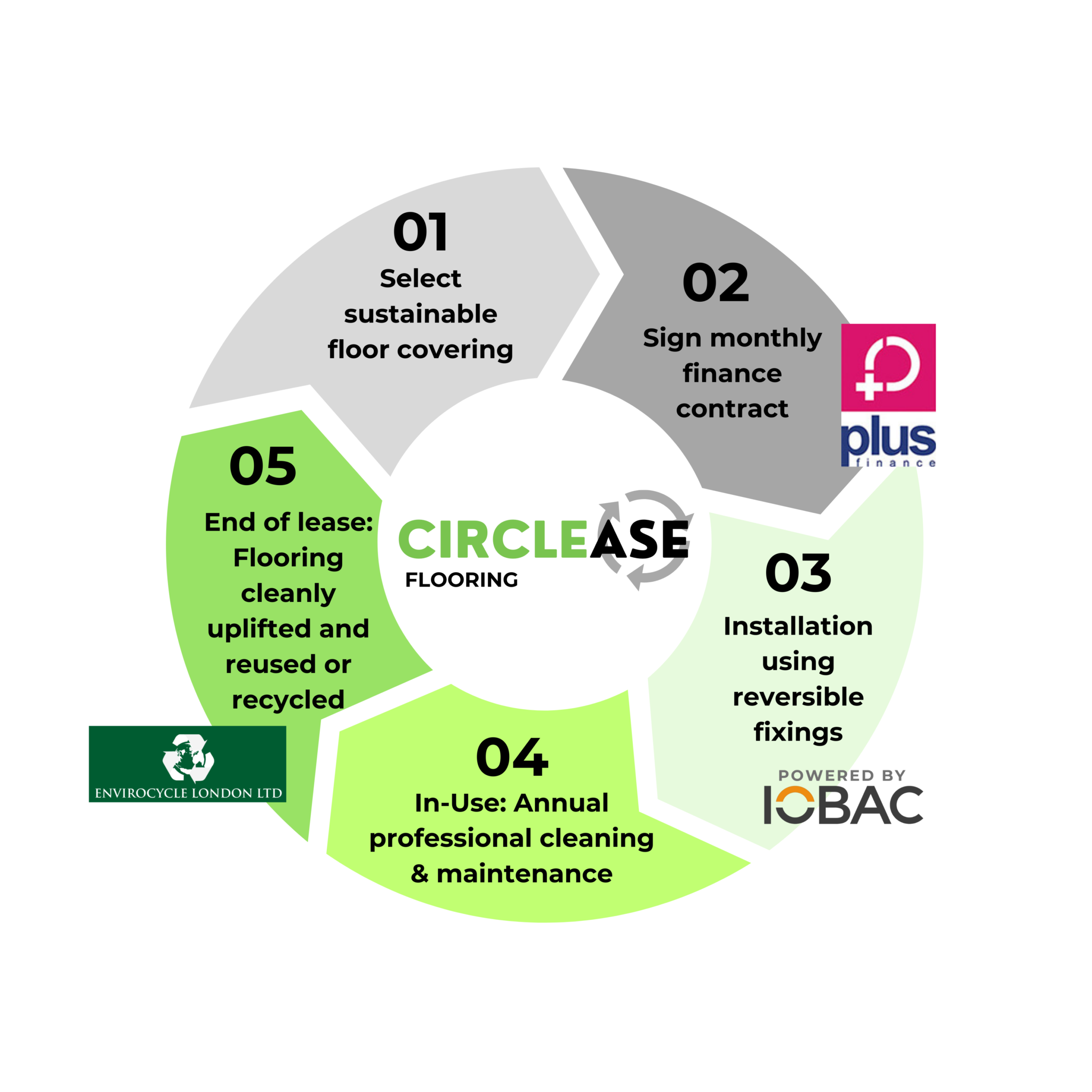
Delivered by trusted partners:
Plus Finance are the UK’s only lease finance company that specialise solely in the office furniture, finishes and flooring fit-out market and have been operating for over 20 years.
Envirocycle London are a licensed waste disposal contractor accredited by the Environment Agency and committed to diverting flooring waste for reuse.
But floor leasing programs have been offered before – what’s different about Circlease??
And how is it circular?
The elements within a Circlease Floor Leasing program have been carefully chosen with modularity, disassembly and reuse in mind.
So that at the end of the lease,
the flooring can be cleanly uplifted and reused elsewhere,
improving material circularity and reducing embodied carbon.
We’ve selected:
- Sustainable modular flooring tiles (carpet, Luxury Vinyl Tile, woven vinyl) from leading manufacturers
- Installed using IOBAC’s reversible contamination-free fixings (MagTabs and Tab-It ) which hold securely throughout the life of the installation
- Professionally cleaned and maintained in-use for maximum longevity
- Cleanly and easily uplifted at contract end to be reused in a second location or recycled
In contrast to previous floor leasing programs, with Circlease Floor Leasing there is an actual contractual obligation on us to recover floor coverings for reuse or recycling.
Instead of all the circular talk referred to earlier, this is a real, practical and effective way to manage the lifecycle of flooring, embedding a circular approach into a traditional leasing model.
For building owner/operators, this gives peace of mind that their flooring fit-outs are as good for the planet as they are for their bottom-line.
Circularity
- Low carbon flooring options installed using reversible IOBAC contamination-free fixings
- Peace of mind that flooring is uplifted at end-of-life and reused elsewhere
- No waste, no landfill, no additional embodied carbon
Protected Assets
- Damage-free uplift means sub-floor assets such as raised metal access flooring are protected and can be reused
- High cleaning, dilapidation and disposal costs at end of lease are eliminated
Flexible Designs
- Access a superior range of carpet, woven vinyl and LVT options from leading manufacturers
- Longer lasting flooring – cleaning and maintenance is included in lease
Improved Cash Flow
- No initial outlay: freeing up capital for use in on revenue projects
- Spread costs in predictable, regular opex payments for easier budgeting
- Contract durations of up to 5 years
- Lease payments can be tax deductible
- Lowered total costs
As a relatively new model, there can be mindset challenges for building owner/operators to overcome when adopting a product-as-a-service approach.
The largest is perhaps the shift in thinking from Capital Expenditure (CapEx) to Operational Expenditure (OpEx), requiring changes in business operations. As with any organisation, there will be multiple stakeholders involved in the decision responsible for areas including finance, procurement, sustainability and facilities management.
The sustainability benefits of product-as-a-service models need to be clearly communicated and understood in order to facilitate and overcome these organisational challenges.
Product-as-a-service is rising in popularity across the built environment, with examples across various product categories:

